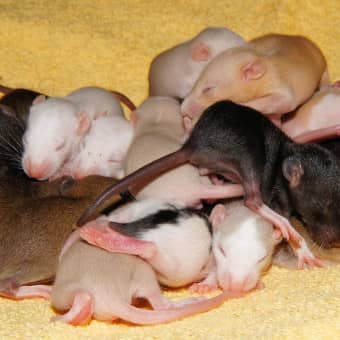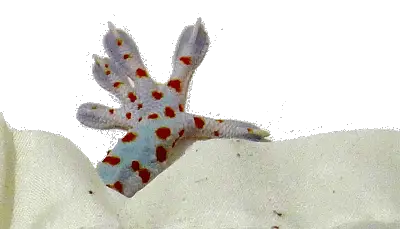What do geckos eat? Do you know that geckos also eat household pests? Read on to find out.
Do you own a pet gecko? You’re in luck because these amazing reptiles serve as natural pest terminators. What pests do these lizards eat? The next section enumerates five of them.
But first, here’s my short story about the amazing geckos.
Are Geckos Harmful?
I heard a friend got injured with scratches and bites when he hurriedly wore his trousers with a gecko in it. An Indian visitor once panicked seeing a gecko in his room. This concern justifies why I usually trap or drive geckos away from home.
But learning the gecko’s feeding behavior changed my attitude. Geckos do bite when stressed, but they are docile and easy to tame. Geckos should be treated with respect because these commonly disdained reptiles that find the ceiling of our homes or the dark sections of the cabinet drawer their ideal habitat serve as natural pest terminators.
For hobbyists who love to take care of exotic pets such as geckos, the feeding behavior of these amazing reptiles is an add-on. Their opportunistic predatory behavior helps balance the micro-ecosystem in the house. Geckos eat pests as their natural prey. You need not buy costly chemicals that can poison your food or degrade the environmental quality.
Which household pests do geckos eat?
Geckos love to eat a range of pests that live in places similar to theirs — the dark, dank and hidden corners and crevices of the house. Household pests live in places where geckos like to tread.
What Do Geckos Eat?
The following household pests compose a gecko’s diet:
1. Mouse and rats

How can geckos get rid of mouse and rats? Obviously, geckos could not win a fight with the large rats but they do feed on rat litter or the young ones.
I learned about this when a Japanese friend approached me and asked if we have geckos in our house. He was looking for some geckos to populate the place he rented.
He explains geckos are efficient predators that can control the ubiquitous mouse and rats commonly found in houses. Geckos frequent dark places where rats usually give birth to their young. Thus geckos prey on the young called “pinkies” when the mother rat is not around to defend them.
Here’s a YouTube video where a gecko snaps at a mouse.
2. Geckos feed on cockroaches

Geckos frequent places where the cockroaches like to hide. These are places that are cool, damp and dark. I saw a gecko feeding on a cockroach but I was not quick enough to take a picture of that rare event. I never saw such predation again.
However, I can no longer see cockroaches under the kitchen sink because a gecko found the moist, dark regions underneath the sink an ideal spot to live and hunt its prey.
It’s just that, once, the gecko startled me when I opened the kitchen cabinet door while reaching for a cooking pot. I was more cautious the next time and gave respect to its territory. I just let it stay there to feast on the cockroaches and other pests that come its way.
3. Centipedes
Crawling things like centipedes attract the gecko’s attention. A few years ago, I saw a gecko snap on a centipede along the wooden beam of our house. That was a quick, well-placed attack that left the poor, wriggling creature trying to escape, helplessly jerking its body in vain. Centipedes are no match to the powerful jaws and teeth of the gecko.
Here is a fight between a gecko and such a large centipede. Will the gecko win?
Unfortunately, the gecko lost the battle. That’s such a large centipede, to begin with. At least it tried its best. Size matters.
4. Swarmers
At dusk during summer, termite colonies produce “swarmers” or winged adults of termites that fly towards light in homes to form their own colonies. Geckos are there to help you get rid of the nuisance.
5. Mosquitoes
Together with the smaller house lizards, mosquitoes are favorite meals of the geckos. They just extend their tongue quickly and retract the mosquitoes stuck on it.
Lay that spray pesticide aside and enjoy the benefits of geckos—a natural pest exterminator.
Things to Watch Out For When Having a Gecko
1. Droppings
While geckos serve as natural pest terminators, watch out for those nasty droppings collected at the back of your cabinets or appliances that are seldom moved. While dining, watch out if there are geckos hanging in your ceiling, too.
Just have a regular cleaning schedule of spots which geckos frequent. Having such routine prevents the buildup of harmful bacteria that feed on the decomposing fecal material.
2. Unlikely home for geckos
I’ve had a bad day when my printer malfunctioned and got damaged when a gecko found the main board of my dot printer its home. It got electrocuted when I switched on the machine. I have to buy another printer because of the mishap.
So if you have a pet gecko, be more cautious with your appliances. It can damage the integrated circuits of air conditioners leading to costly repairs. Check unlikely but potential places of gecko habitat or feeding area. Cover places of entry wire a wire mesh or other means that can prevent their entry.
The next time you see a gecko, think about its role as a natural pest terminator. Dodge, but don’t kill this helpful animal. They serve as natural pest terminators while fulfilling their ecological role. Geckos definitely eat pests. Avoid the use of persistent and bioaccumulative pesticides in controlling pests by welcoming geckos in your home.
Do you know of any other helpful creature in the house? I know another one. It’s the house spider. See what it does by reading the article below:
©2014 May 20 Patrick Regoniel; updated 2022 April 30
[cite]



